The lines are the geometrical one dimensional object with no curve. One dimensional in the sense they have only one dimension, length and no breadth or depth. They are long and straight geometric figures which extend in both the directions. Greek Mathematician Euclid defined line as "breadthless length".
The following is the detailed study of few important types of lines which are studied in geometry.
All the points of a horizontal line have same y-coordinate. It is parallel to the x-axis of the coordinate plane. The horizontal line equation is y = b. Where y is any point in the line of y coordinate and ‘b’ is the y - intercept. It is independent of x.

All the points of a vertical line have same x-coordinate. It is parallel to the y-axis of the coordinate plane. The equation of the vertical line is x = a. Where x is any point in the line of x coordinate and ‘a’ is the x - intercept. It is independent of y.
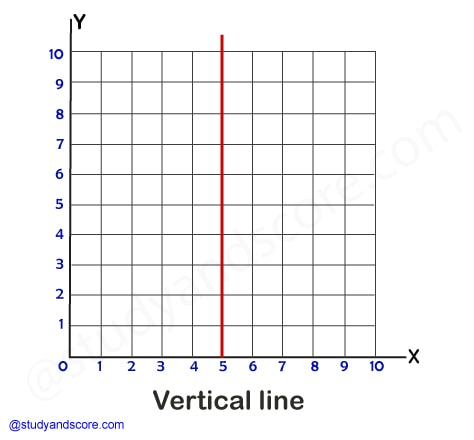
Skew Lines are two different straight lines in two different directions. Skew lines do not lie on the same plane and hence, do not meet each other. The common perpendicular of two skew lines is the line intersecting both of them at right angles. Skew lines are also known as agonic lines. Skew lines exist in three or more dimensions.

These are a pair of lines that cut each other. The point at which these lines meet is called as intersecting point.
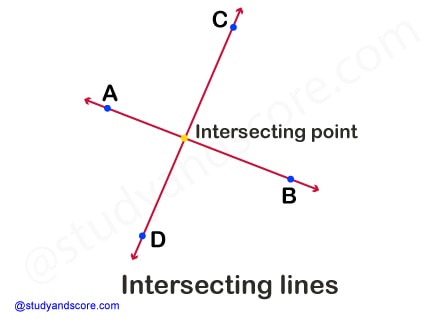
Transversal line is a straight line that cuts 2 or more lines. The lines may or may not be parallel. When a pair of lines is cut by a transversal, 8 angles are formed at two points of intersection.

Straight Line is a line with zero or no curvature. A straight line minimizes the distance between the two points. The shortest distance between two points in the same direction is called as a straight line.
A straight line at right angles to another line is called as the perpendicular.
A straight line that is limiting the value of the curve is called as asymptote.
A straight line that just touches a curve at a particular point but does not intersect it at that point is called as the tangent.
A straight line that intersects the curve at two or the more points is called as the secant.
A straight line from the center to the perimeter of the circle is called as the radius.
A straight line connecting two points on a curve is a chord.
A straight line relating any two vertices of a polygon that are not adjacent is a diagonal.
In general, oblique line is the line which is neither horizontal nor vertical. Mathematically speaking, oblique line is the line that has a slope greater than 0 but smaller than infinity.
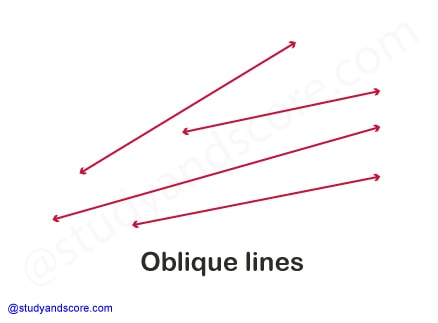
A curved line is the one which is not straight. It has a slight bend. Mathematically speaking, a curve has to be smooth and continuous. A parabola is the ideal example of a curve line.
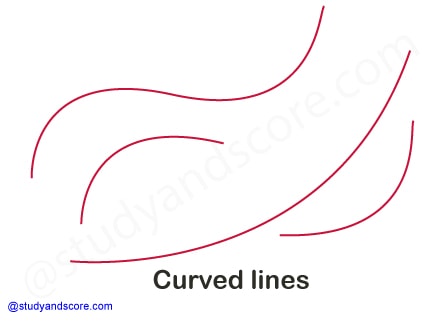
Parallel lines are formed when the distance between two straight lines is same at all points. The parallel lines are represented by ∥. Two lines are said to be parallel if there slopes are equal.
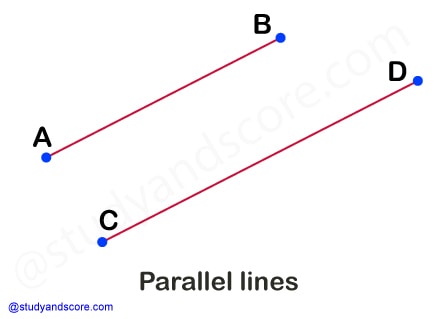
Perpendicular lines are formed when a horizontal and a vertical line meet each other. The perpendicular lines are represented by ⏊.
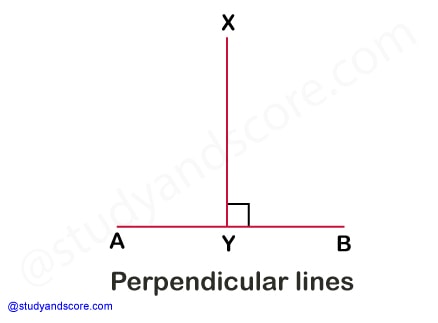
- Share with your friends! -
Login to post your comment here...
- or with social Account -